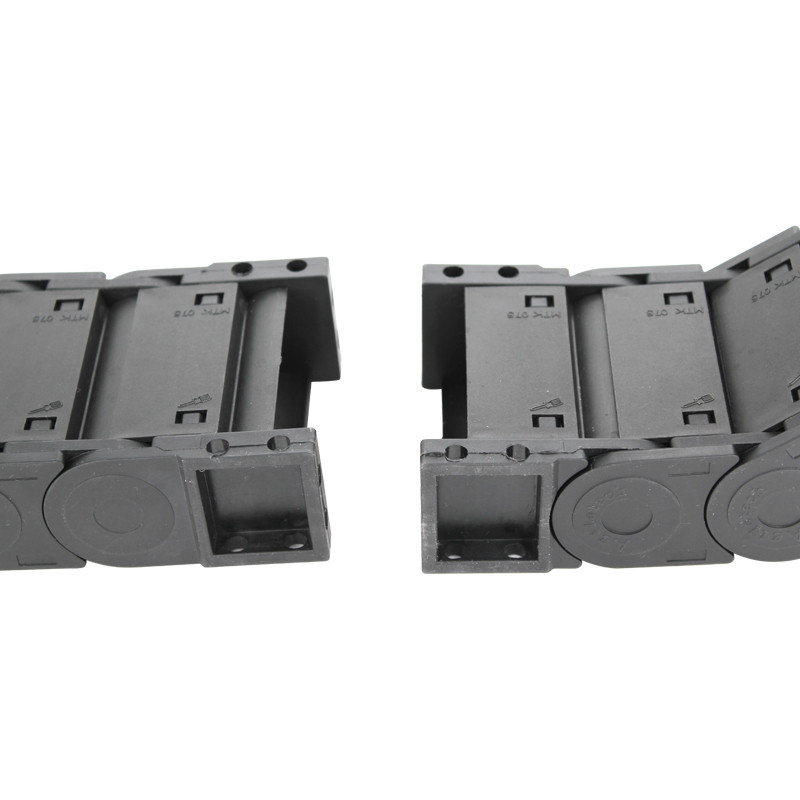Enhanced Durability Drag Chain for Improved Performance and Reliability
Understanding Reinforced Drag Chains An Overview
In today's technologically advanced world, various industries are dependent on efficient and reliable equipment to ensure smooth operations. Among these essential tools, drag chains play a critical role in the movement and management of cables and hoses. Reinforced drag chains, in particular, have gained prominence due to their enhanced durability and functionality. This article provides an in-depth look into what reinforced drag chains are, their applications, and the advantages they offer.
What are Drag Chains?
Drag chains, also known as cable carriers or energy chains, are devices used to organize and protect flexible cables and hoses in motion. They serve the function of guiding these components as machinery operates, while also preventing tangling, abrasion, and wear. Drag chains are commonly utilized in industrial environments, particularly in areas involving robotic arms, CNC machines, and other automated equipment where precise movement is vital.
The Need for Reinforcement
Standard drag chains are effective for various applications; however, they may not withstand harsh conditions or heavy loads. This limitation has led to the development of reinforced drag chains. These chains incorporate additional materials, such as steel, aramid fibers, or other robust composites, to enhance their structural integrity. The reinforcement ensures that they can endure higher stress levels, extreme temperatures, and the abrasive wear that often accompanies industrial use.
Applications of Reinforced Drag Chains
Reinforced drag chains find applications across multiple sectors, including
1. Manufacturing In factories where machines are constantly moving, reinforced drag chains are critical in ensuring that cables do not snag or wear out due to repetitive motion. They effectively house power cables, data cables, and pneumatic hoses with minimal risk of damage.
2. Robotics Robotics applications require precision and reliability. Reinforced drag chains help in managing the connections between stationary and moving parts, ensuring that the robotic system functions efficiently without cable interference.
3. Automotive Industry In automotive assembly lines, reinforced drag chains facilitate the movement of sensors and electrical components. Their ability to withstand high temperatures and harsh chemicals makes them an ideal choice for this sector.
reinforced drag chain

4. Logistics In conveyor systems, reinforced drag chains manage the movement of electrical and hydraulic lines efficiently. They help maintain clear pathways for operations, ultimately improving productivity.
Advantages of Reinforced Drag Chains
Investing in reinforced drag chains provides numerous benefits, including
1. Enhanced Durability The reinforced design ensures that these drag chains can endure more rigorous conditions compared to standard options. This longevity translates to reduced maintenance costs and less frequent replacements.
2. Improved Flexibility Many reinforced drag chains are designed with a flexible structure that allows them to adapt to various configurations while maintaining their strength. This versatility is essential in dynamic environments where space and movement can vary.
3. Protection Against Environmental Factors Reinforced drag chains can resist exposure to chemicals, moisture, and temperature fluctuations. Industries operating in areas with extreme conditions will find these chains particularly beneficial.
4. Reduced Noise The smooth operation of reinforced drag chains minimizes friction, which leads to quieter machinery. A quieter workplace is often seen as a more pleasant environment for workers.
5. Increased Load Capacity Reinforced drag chains are engineered to handle heavier loads without compromising performance. This makes them suitable for applications that require transporting substantial amounts of cables and hoses.
Conclusion
As industries continue to evolve and demand more efficient and reliable solutions, reinforced drag chains are becoming an essential component of modern machinery. Their ability to provide enhanced durability, flexibility, and protection makes them a preferred choice across various sectors. Investing in reinforced drag chains can result in significant long-term savings and improved operational efficiency, underscoring their importance in today’s technological landscape. As we move towards a more automated future, the role of reinforced drag chains will undoubtedly become increasingly pivotal in ensuring that systems run smoothly and efficiently.








